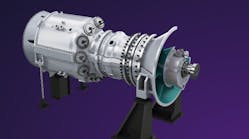Plug Power Fills First Liquid Green Hydrogen Tank for Delivery to Walmart, Amazon, and Home Depot Sites
Plug Power has completed the first fill of a Plug tanker with liquid green hydrogen produced at its Woodbine, Georgia, production facility, for us at Walmart, Amazon, and Home Depot sites to fuel more than 3,200 forklifts each day.
Plug’s Georgia facility currently operates eight 5 MW electrolyzers capable of producing up to 15 tons of liquid green hydrogen per day to serve customers in the eastern US.
“We took a big step today to make cost-effective green hydrogen available to our pedestal customers. This validates our investment in building out a production plant network – a bet on our customers’ desire for more sustainable solutions,” said Sanjay Shrestha, Plug’s General Manager of Energy Solutions and Chief Strategy Officer.
From production to fill, the Plug process can be completed in about four days and then delivered on trailers to green hydrogen customers through Plug’s extensive logistics network.
The company’s cryogenic and liquefaction capabilities are integral to its operations and allow the green hydrogen to be safely and efficiently transported to customers.
In total, Plug’s liquid hydrogen tankers can transport up to 80,000 pounds per maximum gross vehicle weight.





